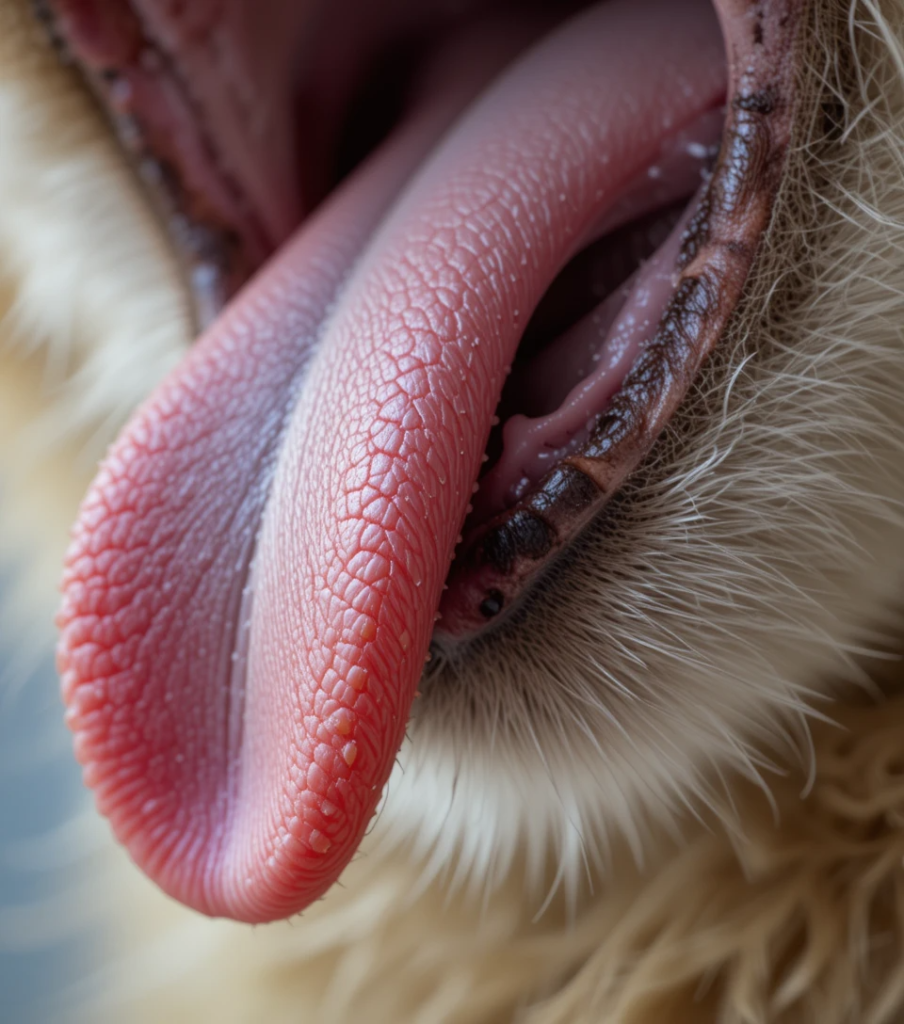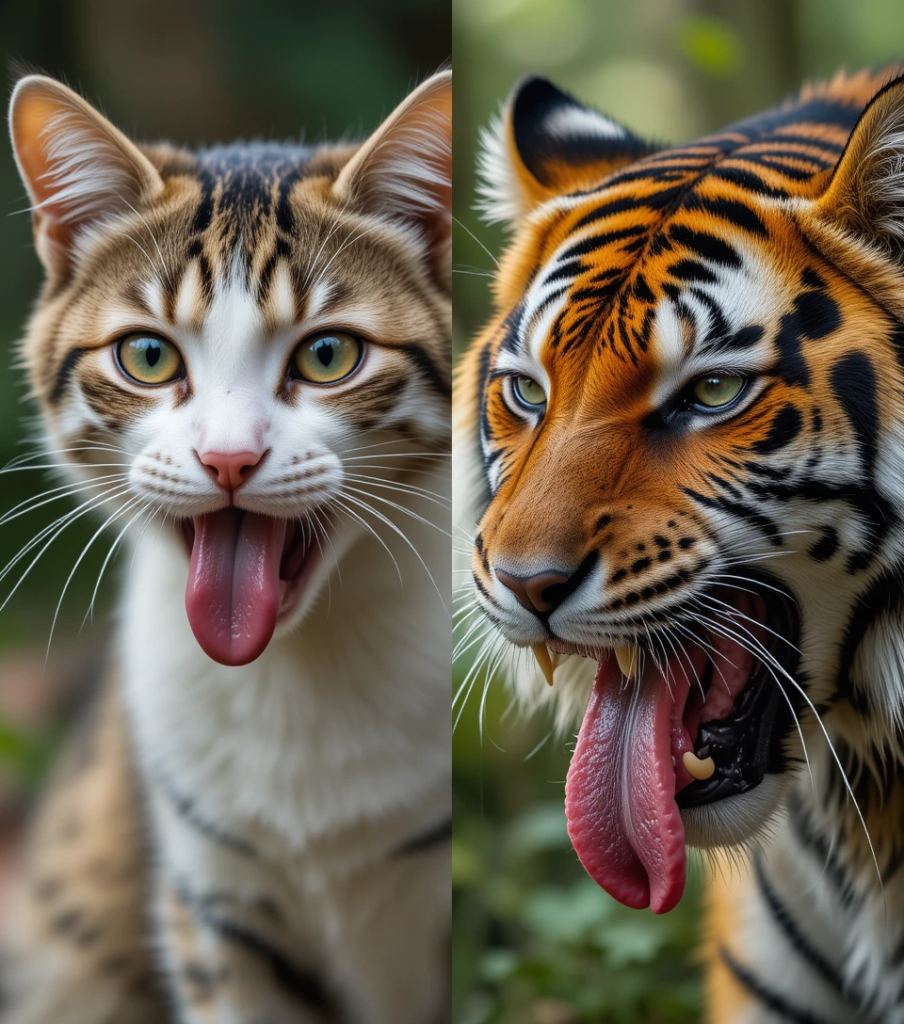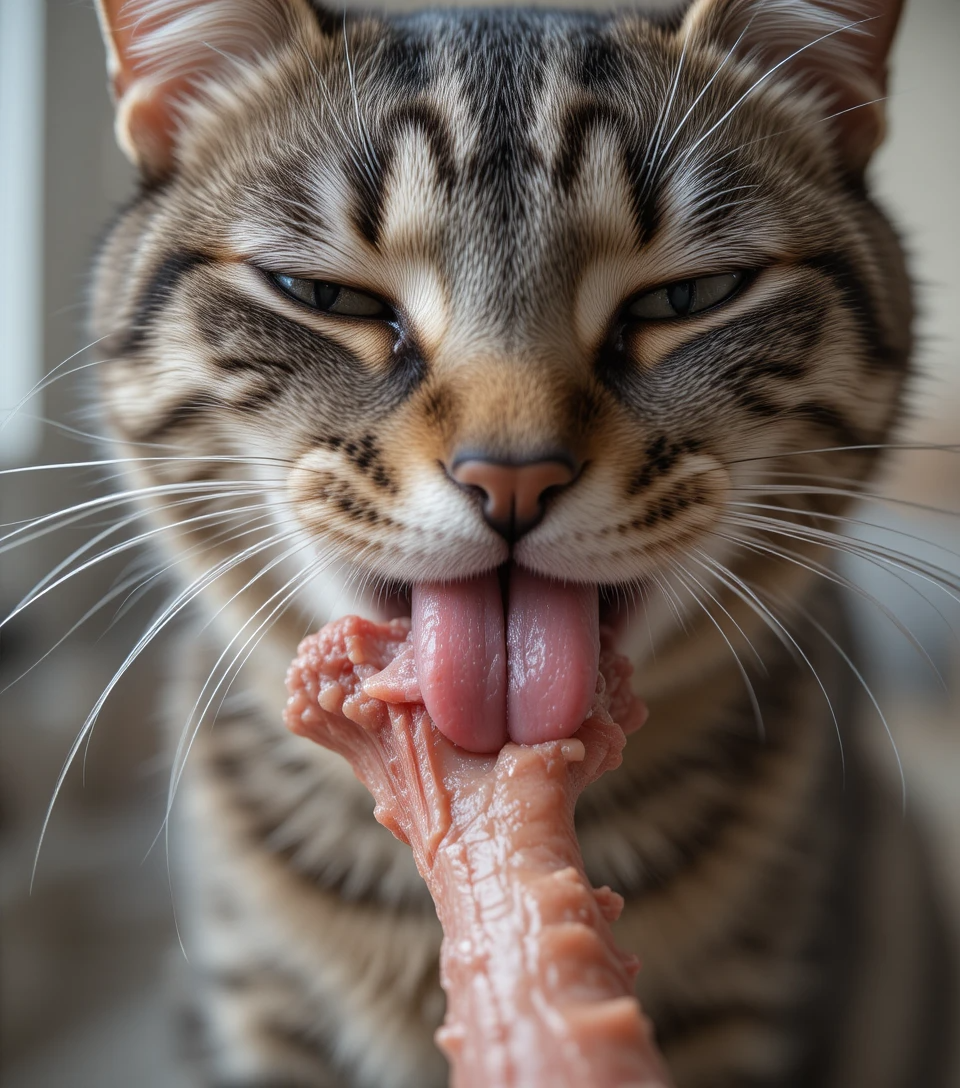Have you ever watched your cat meticulously lick a leftover bone clean? It might seem like a quirky habit, but there’s actually fascinating science behind it. A cat’s tongue isn’t just a grooming tool—it’s a highly specialized, evolutionarily refined organ that can strip meat from bones with astonishing precision. Let’s explore what makes a cat’s rough tongue so wildly good at bone cleaning and why it matters more than you might think.
What Makes a Cat’s Tongue So Rough?

The secret lies in the unique texture of a cat’s tongue. Covered in hundreds of backward-facing spines called papillae, the feline tongue feels like fine sandpaper. These tiny structures are made of keratin—the same tough protein found in human fingernails and hair.
Each papilla is shaped like a curved hook, which allows cats to grip, pull, and scrape with surprising force. This structure is perfect not only for grooming fur but also for removing tiny morsels of meat from bones.
How Cats Use Their Tongue to Clean Bones
Cats, whether domestic or wild, are obligate carnivores. Their tongues are designed to optimize meat consumption, ensuring nothing is wasted. After using their teeth to tear into prey, cats use their tongue to finish the job—scraping off every last bit of edible tissue.
When licking a bone, the papillae catch onto bits of muscle and sinew. With each pass, a cat can effectively strip a bone clean, even getting into small crevices that teeth or paws can’t reach. This behavior mimics how wild cats process their food in the wild, ensuring they extract the maximum nutrition from each catch.
The Science Behind the Bone-Cleaning Tongue
In recent years, scientists have taken a closer look at the biomechanics of the feline tongue. Researchers have found that the papillae are not just stiff spikes—they also have a hollow core that helps wick saliva deep into the fur or onto food.
This system increases friction and aids in cleaning efficiency, both when grooming and feeding. It’s nature’s version of a multi-tool: one organ, many functions, perfected by millions of years of evolution.
Comparison: Domestic Cats vs. Wild Cats

Domestic cats (Felis catus) share a nearly identical tongue structure with their wild cousins—lions, tigers, and leopards. While your housecat may not be taking down gazelles, it still retains the instincts and anatomy that make bone-cleaning an efficient behavior.
Big cats use their tongues to clean blood and meat from carcasses. Housecats show similar behavior, albeit on a much smaller scale—licking chicken bones, canned food leftovers, or even chew toys.
Is It Safe for Cats to Lick Bones?
While your cat’s tongue is built for the task, licking or chewing bones can pose risks—especially if the bones are cooked. Cooked bones can splinter and injure the mouth or digestive tract. Raw bones, under veterinary guidance, may be safer, but always supervise.
If your cat is licking a bone without chewing or biting into it, the risk is lower. However, avoid giving bones with sharp edges or small pieces that could break off.
How This Adaptation Helps in Grooming
Cats spend up to 50% of their waking hours grooming, and their rough tongues play a central role. The papillae untangle fur, remove dirt, and spread beneficial oils across the coat.
The same scraping action used on bones helps clean the skin, remove parasites, and even regulate body temperature. It’s an efficient self-care system—grooming and eating powered by the same tool.
Feline Evolution and Hunting Efficiency
Cats evolved as stealthy, energy-conserving predators. Once they catch prey, they must maximize energy return. The tongue’s rough texture ensures nothing goes to waste, allowing cats to get every bit of nutrition from a carcass.
This efficient feeding behavior helped wild cats thrive in diverse habitats, from deserts to jungles—and the domestic cat inherited these same traits.
Fun Facts About Cats’ Tongues
- A cat’s tongue is so strong and textured that it can lick the meat off your fingers.
- Some cats may overgroom due to anxiety, taking full advantage of their rough tongues.
- The barbs on the tongue point backward, making it impossible for a cat to spit out fur once it’s swallowed.
Final Thoughts: More Than Just a Grooming Tool
Your cat’s tongue is more than a cleaning device—it’s a marvel of natural engineering. From grooming their silky coats to licking bones clean with surgical precision, cats use their tongues in ways that showcase both their wild heritage and their domestic quirks.
Next time your furry friend is hard at work on a bone, take a moment to appreciate the tiny spines, ancient instincts, and efficient evolution behind every lick.
❓ 10 FAQs About Cats’ Rough Tongues and Bone Cleaning
- Why is a cat’s tongue so rough?
It’s covered in keratinized papillae—tiny spines that aid in grooming and meat removal. - Can a cat really clean a bone with its tongue?
Yes! The barbed tongue helps strip small pieces of meat and tissue from bones. - Is it safe for cats to lick or chew bones?
Raw bones may be safer than cooked ones, but supervision is always advised. - Do wild cats have the same kind of tongue?
Absolutely—lions, tigers, and leopards share similar tongue anatomy. - What are the spines on a cat’s tongue made of?
They’re made of keratin, the same tough protein in claws and hair. - Can licking bones damage a cat’s tongue?
Not usually, but sharp bone fragments can pose a risk to the mouth or gums. - Why do cats lick things that aren’t food?
It could be grooming behavior, curiosity, or a sign of stress or pica. - Does a cat’s rough tongue help with digestion?
Indirectly—by cleaning meat off bones, they maximize nutrient intake. - Are there other animals with similar tongues?
Some big cats and anteaters have specialized tongues, but few match cats’ roughness. - Can I feel the roughness of a cat’s tongue?
Yes—if your cat licks your hand, it’ll feel like fine-grain sandpaper!

